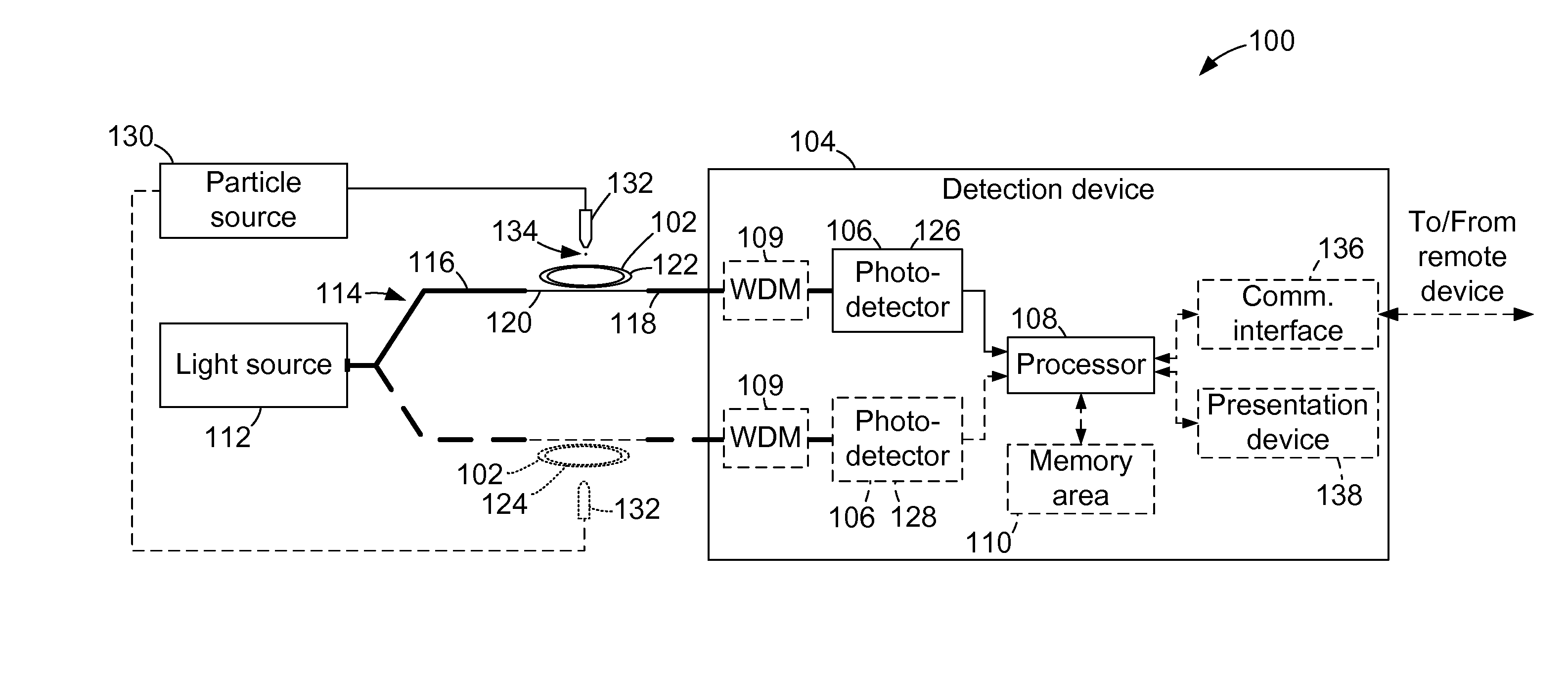Systems and methods for particle detection
a particle detection and system technology, applied in the field of systems and methods for particle detection, can solve the problems of limited use, bulky and expensive instruments, and potential threats to health and environment of nanoparticles generated by vehicles and industries
- Summary
- Abstract
- Description
- Claims
- Application Information
AI Technical Summary
Problems solved by technology
Method used
Image
Examples
Embodiment Construction
[0038]Embodiments described herein facilitate detecting the presence and the polarizability, which is related to the size, the composition, and / or the refractive index, of one or more objects on the surface of a whispering gallery mode (WGM) resonator. Accordingly, such embodiments enable the creation of a portable, inexpensive, and high-resolution device capable of real-time and in-situ detection of particles surpassing current detection limits.
[0039]The embodiments described herein further facilitate detecting and counting nanoparticle with a tapered optical fiber having a sub-wavelength diameter. The individual particles are detected as they enter an evanescent field of the tapered optical fiber. Further, the individual particles may be detected without labeling (e.g., fluorescent dyes). Unlike at least some known particle detection systems, the particle detection systems and methods described herein do not require tunable lasers, bulky optical components, and / or lengthy signal p...
PUM
 Login to View More
Login to View More Abstract
Description
Claims
Application Information
 Login to View More
Login to View More - R&D
- Intellectual Property
- Life Sciences
- Materials
- Tech Scout
- Unparalleled Data Quality
- Higher Quality Content
- 60% Fewer Hallucinations
Browse by: Latest US Patents, China's latest patents, Technical Efficacy Thesaurus, Application Domain, Technology Topic, Popular Technical Reports.
© 2025 PatSnap. All rights reserved.Legal|Privacy policy|Modern Slavery Act Transparency Statement|Sitemap|About US| Contact US: help@patsnap.com



